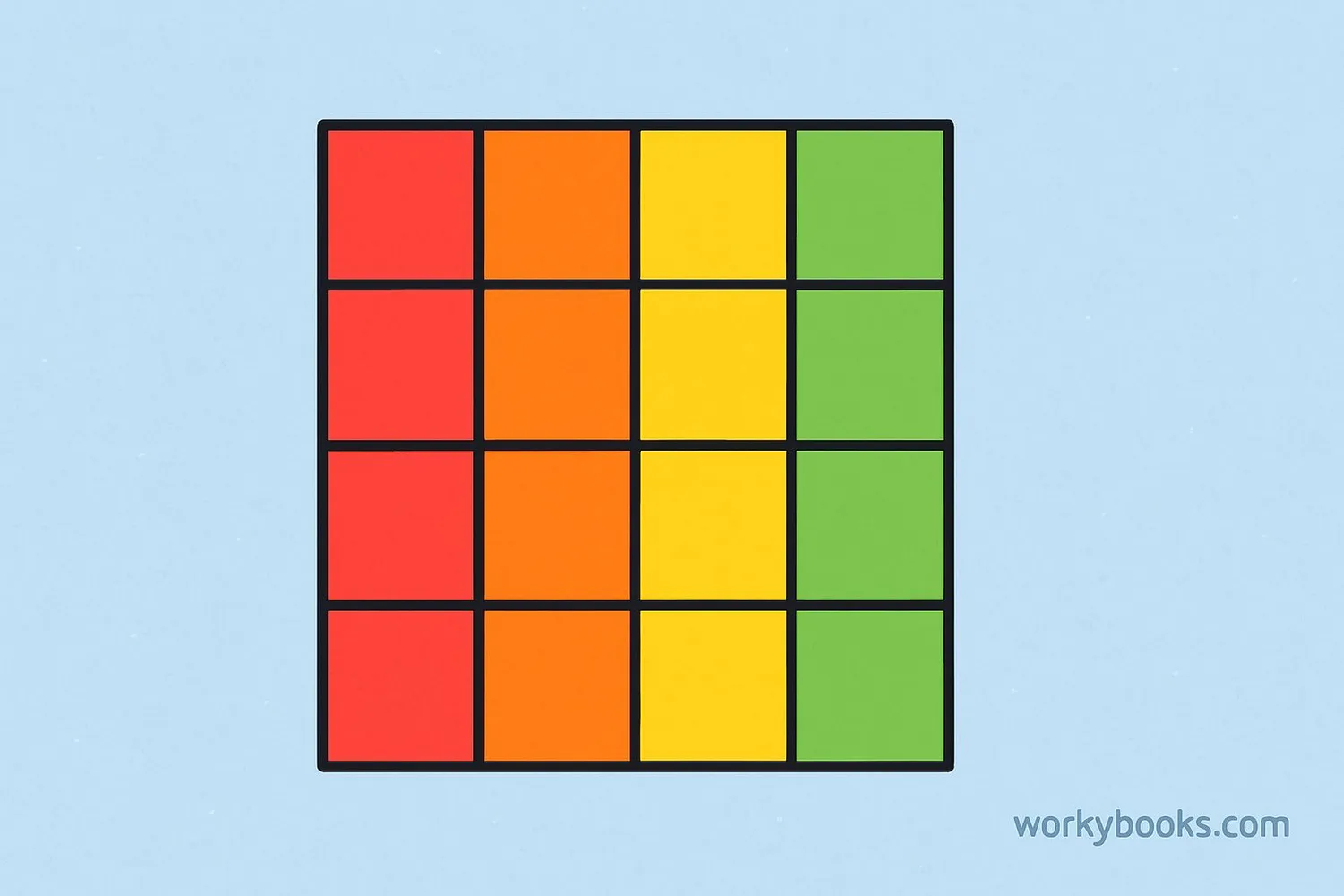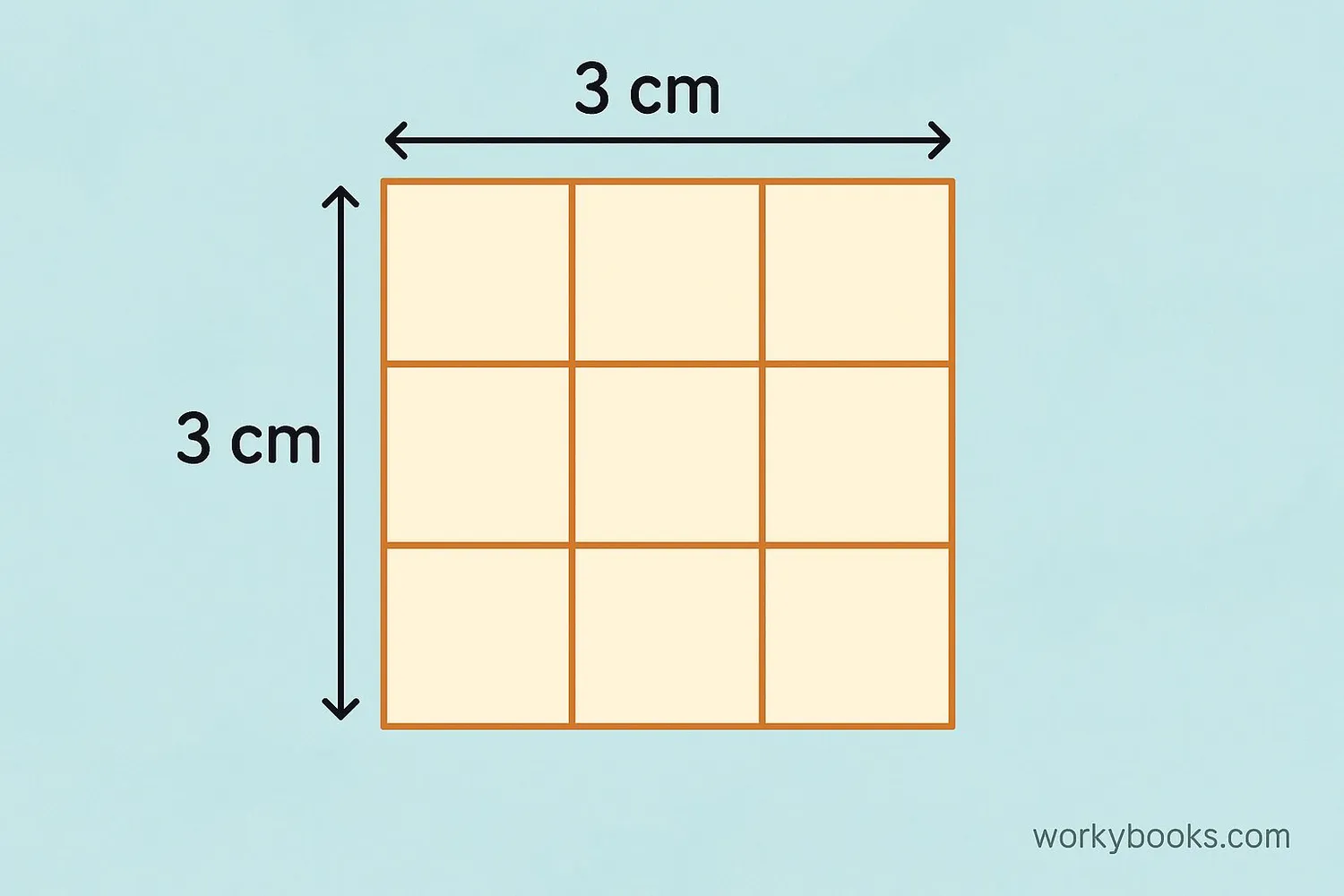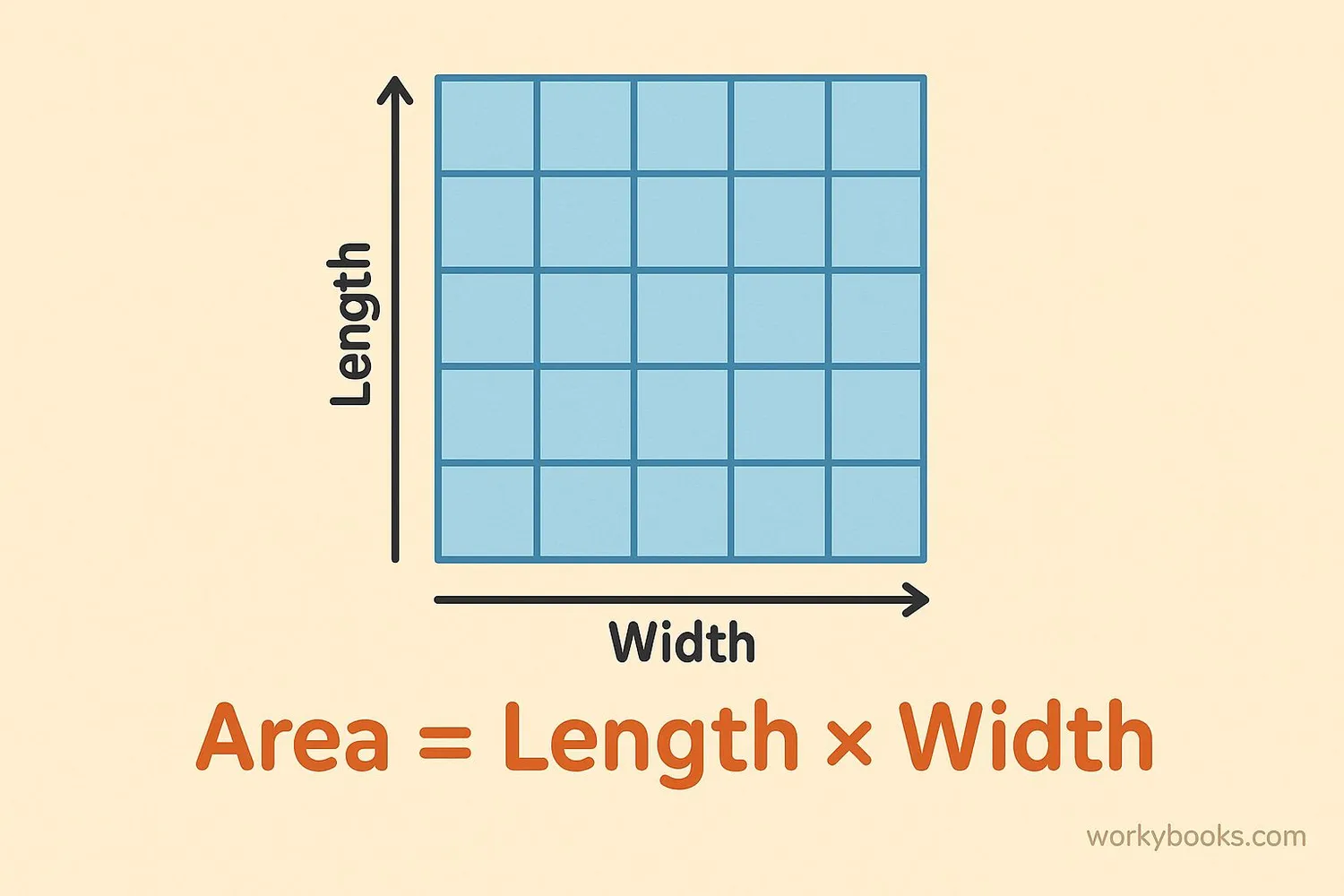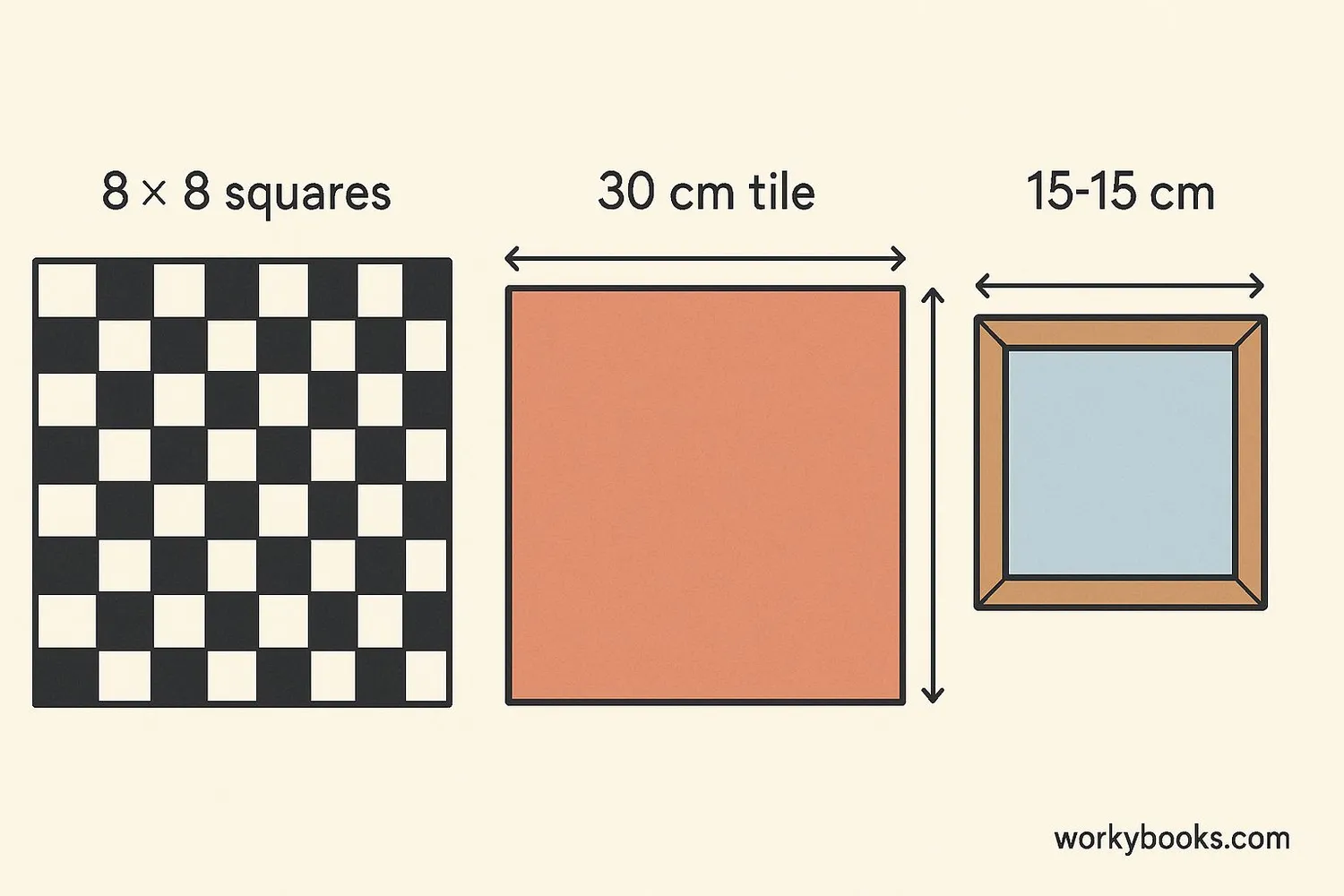Area of a Semicircle - Definition, Examples, Quiz, FAQ, Trivia
Learn how to calculate the area of a square with easy explanations, examples, and practice activities
What is Area of a Square?

The area of a square is the amount of space inside the square. Think of it as how many square units can fit inside the shape. We measure area in square units like square centimeters (cm²) or square meters (m²).
Why is this important? Understanding area helps us in many real-life situations like measuring a room for new carpet, calculating how much paint we need for a wall, or figuring out the size of a garden.
All sides of a square are equal, which makes calculating its area especially straightforward. If you know the length of one side, you can easily find the area.
Key Concept
A square has four equal sides and four right angles. The area is the space contained within these four sides.
How to Find the Area of a Square

There are two main ways to find the area of a square:
1. Counting Unit Squares: If you have a grid, you can count how many small squares fit inside the big square. For example, a square that is 3 units long and 3 units wide would contain 3 × 3 = 9 unit squares.
2. Using the Formula: The area of a square is calculated by multiplying the length of one side by itself. This works because length and width are equal in a square.
Area Formula
Where 's' is the length of one side of the square.
Remember
Area is always measured in square units. If sides are measured in centimeters, area will be in square centimeters (cm²).
Understanding the Area Formula

Why does the formula work? Let's think about a square with sides of 4 cm:
If we divide it into 1 cm squares, we get 4 rows and 4 columns of small squares. How many small squares are there? 4 × 4 = 16. So the area is 16 cm².
This shows that the area is indeed the side length multiplied by itself. We can write this as:
The small ² symbol means "squared" and shows that we're multiplying the number by itself.
Example 1
Side = 5 cm
Example 2
Side = 7 m
Example 3
Side = 10 in
Real-World Examples

Let's practice calculating area with some real-world examples:
Example 1: A chessboard has squares that are 5 cm on each side. What is the area of one chess square?
Solution: Area = 5 cm × 5 cm = 25 cm²
Example 2: A square tile measures 30 cm on each side. What is its area?
Solution: Area = 30 cm × 30 cm = 900 cm²
Example 3: A square picture frame has sides of 20 cm. What area will the picture cover?
Solution: Area = 20 cm × 20 cm = 400 cm²
Example 4: A square garden bed is 2 meters on each side. How much soil is needed to fill it?
Solution: Area = 2 m × 2 m = 4 m² (so we need 4 square meters of soil)
Try measuring square objects around you and calculate their area!
Important Note
Always include the units in your answer. If sides are in centimeters, area will be in square centimeters (cm²).
Area of a Square Quiz
Test your understanding with this 5-question quiz. Choose the correct answer for each question.
Frequently Asked Questions
Here are answers to common questions about the area of a square:
Math Trivia
Discover interesting facts about squares and measurement:
Ancient Origins
The concept of area dates back to ancient Egypt around 3000 BC. Egyptians developed geometry to measure fields after Nile River floods.
Largest Square City
The city of Denver, Colorado has the largest square city block in the United States. Each side of the downtown area measures exactly 1 mile!
Square in Space
Satellite images use square pixels to capture Earth's surface. Each pixel represents a square area on the ground, sometimes as small as 30cm × 30cm!
Perfect Square
The largest perfect square number is 1,000,000,000,000 (one trillion). Its square root is exactly 1,000,000 (one million).


